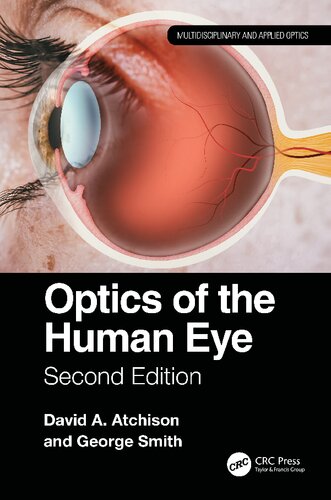

Most ebook files are in PDF format, so you can easily read them using various software such as Foxit Reader or directly on the Google Chrome browser.
Some ebook files are released by publishers in other formats such as .awz, .mobi, .epub, .fb2, etc. You may need to install specific software to read these formats on mobile/PC, such as Calibre.
Please read the tutorial at this link: https://ebookbell.com/faq
We offer FREE conversion to the popular formats you request; however, this may take some time. Therefore, right after payment, please email us, and we will try to provide the service as quickly as possible.
For some exceptional file formats or broken links (if any), please refrain from opening any disputes. Instead, email us first, and we will try to assist within a maximum of 6 hours.
EbookBell Team

4.0
16 reviewsBasic optical structure of the eye, including the refracting components, the pupil, axes, and simple models of the eye
Image formation and refraction of the eye, including refractive errors, measurement, and correction
Interactions between light and the eye, considering transmission, reflection, and scatter in the media and at the fundus
Aberrations and retinal image quality
Depth-of-field and age-related changes in the optics of the eye
There have been many developments in the field of visual optics since the first edition was published in 2000. There have been advances in instrumentation for imagery, biometry, and aberrations of the eye. The refraction anomaly of myopia has increased in prevalence throughout the world, and is getting increasing attention because of its association with ocular pathology in the middle and later years of life. Ocular aberrations are now considered in terms of Zernike polynomials rather than Taylor polynomials. Aberrations can be manipulated to better understand their effects on visual performance to improve imagery of the retina for the betterment of diagnosis of various ocular conditions, and to treat the progression of myopia in children. To deal with these developments, the section on aberrations and retinal image quality has undergone considerable revision.
This book will be an invaluable purchase for all those with an interest in vision, such as optometrists, ophthalmologists, vision scientists, optical physics, and student of visual optics. An understanding of the optics of the human eye is particular important to designers of ophthalmic diagnostic equipment and visual optical systems such as telescopes.